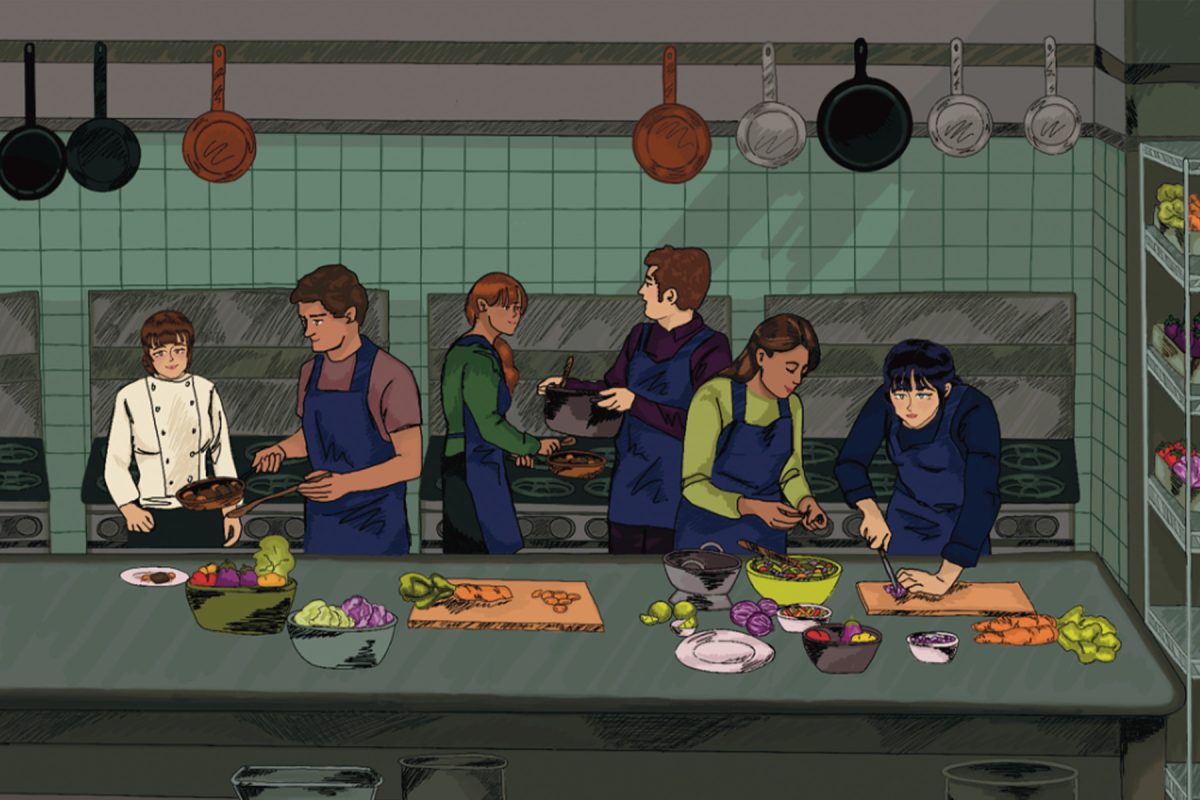Actor, writer and director Stanley Tucci’s latest addition to his portfolio, “Final Portrait”, qualifies every aspect of the term “passion project”. Adapted from his favorite book, Tucci does an excellent job of painting his own portrait of an aged artist, while avoiding common cliche pitfalls, with help from an exceptional performance by Geoffrey Rush.
Set in 1964 Paris, “Final Portrait” appeals to the American Francophile with its focus on art and a curious man named Alberto. But different from similar movies like “Midnight in Paris”, Final Portrait does not waste time captivating the audience with a grand depiction of the city.
The set is relatively simple, with most of the scenes taking place in Alberto’s art studio or neighborhood cafes. However, the film does not shy away from the grit and grime of rundown Parisian buildings. The art studio really felt like a place someone had been creating art in for decades and not just some half-baked imitation for the camera. It is oddly, and most definitely unconventionally, beautiful.
There is much to be said for the acting in the film as well. Geoffrey Rush nails the portrayal of Alberto very well, balancing genius with madness. The audience can become irritated with him one moment and then empathize with him the next, just as Armie Hammer’s character does during the painting of the portrait.
The supporting characters each feel unique, despite having less time devoted to fleshing them out. The dialogue shines in Tucci’s script, with its many instances of humor, which feel natural and clever. However, the most powerful scenes in the movie usually had very little dialogue and portrayed anguish and humanity with simple brush strokes, eye twitches and other spot-on non-verbals.
While the film is beautiful, it is not without fault. Most of the shots tend to shake a bit, which is distracting in the beginning. As for the story, violence against women is depicted, yet shrugged off without any sort of commentary. It is only by Rush’s performance the audience can continue to empathize with his character after these moments and even then, it requires forgiveness.
The film’s conclusion ends rather abruptly, which is odd considering the well-paced plot. However, this is consistent with the themes of the story. Painstaking attention to the detail of the painting is shown for most of the movie, but when the painting is left unfinished, so too is the movie.
There is not a focal, Oscar-bait scene at the climax, because it would be out of place in this story, even though we have come to expect it in similar films. Alberto continuously paints over much of his previous work, even when his subject defends its quality. Choosing to focus on Alberto’s flaws and humility is one of the key aspects of “Final Portrait” which kept it from slipping into a pretentious, self-indulgent mess.
Alberto’s seemingly endless process to produce this one last portrait also benefits from Stanley Tucci’s own quest to adapt the work. Adapting the memoir by any other director would probably yield an acceptable, but forgettable, biopic of an obscure figure. But after 30 years of waiting and planning, Tucci delivers a touching, accessible story which manages to touch maestro and layman alike.
– Zach Ienatsch is a journalism senior
SXSW Film review: Final Portrait
March 10, 2018
Donate to The University Star
Your donation will support the student journalists of Texas State University. Your contribution will allow us to purchase equipment and cover our annual website hosting costs.


















